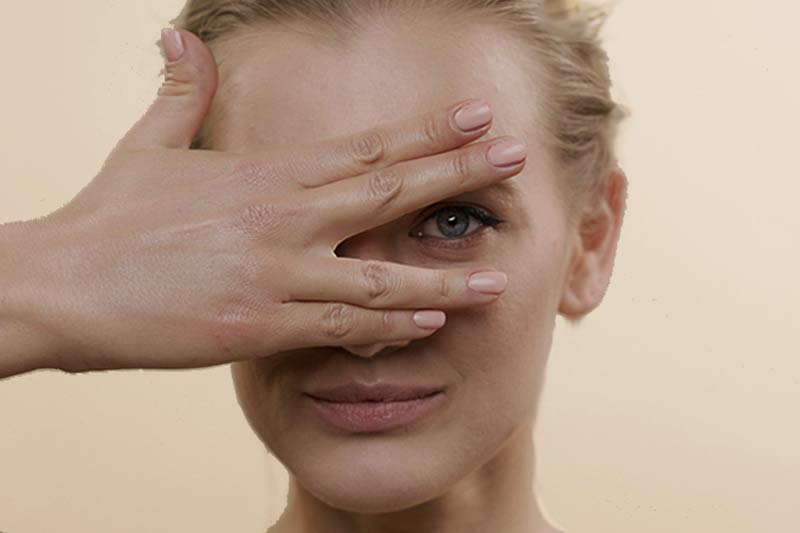Known as “liquid rhinoplasty,” nose fillers have become a popular alternative to plastic surgery. The procedure enables patients to modify the shape of their noses in a quick procedure that doesn’t require anesthesia, stitches, and downtime. That is not to say nose fillers are 100% safe, however.
This article explains the effects of a nose filler gone wrong, how to minimize the risk of unwanted filler side effects, and what to do if they occur.

How Do I Know if My Nose Filler Has Gone Wrong?
Patients usually experience some side effects after a dermal filler, including redness, swelling, and bruising. These symptoms are usually mild and short-lived. However, the following signs of a nose filler gone wrong may require another cosmetic intervention or medical help.
Note: If you decide to achieve fuller lips with fillers, find out how to reduce swelling after lip filler, a common side effect of this treatment.
1. Unnatural Results
An unnaturally wide nose or a high nose bridge are among the most common symptoms of a nose filler gone wrong. They are usually the result of an inexperienced injector administering a thicker filler than required or injecting it in the wrong location or depth. Unnatural results also occur when the patient asks for more filler, under the inaccurate assumption that more filler leads to better results.
Note: Learn how Botox for a wide nose can make it look slimmer, lift a drooping nasal tip, and reduce nostril widening.
2. Asymmetrical Results
Nose asymmetries occur when the filler migrates to surrounding areas, often due to the patient not following the provider’s aftercare instructions. Strenuous exercise, bending down, and applying pressure on the nose after the treatment increase the risk of the filler migrating and causing undesirable results.
3. Necrosis (Tissue Death)
The nose is filled with blood vessels, increasing the chance of the injection hitting one and causing vascular occlusion. The blocked blood vessel prevents the supply of blood and oxygen to the surrounding tissue, causing it to rot and die.
4. Permanent Scarring
If skin necrosis is left untreated, it may result in permanent scarring. The chances of this happening are higher when the lesions resulting from vascular compromise and necrosis are widespread.
5. Vision Problems
Since the nose is filled with blood vessels and close to the eyes, inexperienced injectors are more likely to block an artery and cause vision problems. These can manifest as blurred vision and even blindness. This risk is rare but highlights the need for a licensed medical professional with deep knowledge of facial anatomy to perform the procedure.
6. Infection
Having the nose filler treatment in a non-sterile environment can lead to an infection in the treatment area. The symptoms include inflamed skin, pain, systemic fever, nodules, and pustules.
How Long Will the Effects of Nose Filler Gone Wrong Last?
Fortunately, because nose fillers are typically based on hyaluronic acid they can be dissolved with an enzyme called hyaluronidase. The provider injects the enzyme in the treatment area to break down the hyaluronic acid filler and fix asymmetries, oversized nose, and other unwanted effects of the treatment.
Alternately, patients can wait for the effects of the nose filler to subside as the filler dissolves naturally. This usually happens after six to 12 months.
Note: Learn how to dissolve lip fillers with hyaluronidase.
How to Avoid Nose Fillers Going Wrong?
Patients can follow certain steps to ensure maximum safety and optimal results after a nose filler procedure.
1. Go to a Certified Medical Provider
Patients should do thorough research to find a reputable medical provider with a high record of successful nose filler treatments. Poor results and severe side effects usually occur when an untrained injector with little understanding of nose anatomy performs the procedure.
2. Set Reasonable Esthetic Goals
Nose fillers can go wrong when patients have unrealistic expectations. Providers should clearly explain the limitations of non-surgical nose jobs, including the inability to make the nose slimmer or smaller. Nose fillers are designed to slightly tweak the shape of the nose, smooth bumps on the nose bridge, and add volume to make it more proportionate to the rest of the face. Requesting more filler to achieve impossible results can make the nose look bigger or asymmetrical.
3. Adhere to the Provider’s Aftercare Instructions
During the pre-treatment consultation, medical providers explain to patients how to behave after the treatment to reduce the risk of side effects. Some advice includes avoiding physical strain, lying down, and drinking alcohol after fillers. Patients who don’t adhere to these recommendations can cause the filler to migrate to surrounding areas and lead to other complications.
Note: Learn more about dermal fillers aftercare to reduce the risk of unwanted side effects.
What to Do if Nose Fillers Go Wrong?
If you experience the above symptoms after a nose filler treatment, contact your medical provider. Depending on the symptom and its severity, the provider may advise the following:
- Dissolve the filler using hyaluronidase.
- Administer more filler in strategic places to correct asymmetries.
- Treat infection with antibiotics.
- Recommend treatments for necrosis, such as PRP treatment, surgical removal of dead tissue, and antibiotics.
Conclusion
Nose filler treatments are becoming more popular than plastic surgery because when properly performed they are safer and more convenient. Make sure to book your treatment with a licensed and experienced provider to avoid the effects of a nose filler gone wrong.


